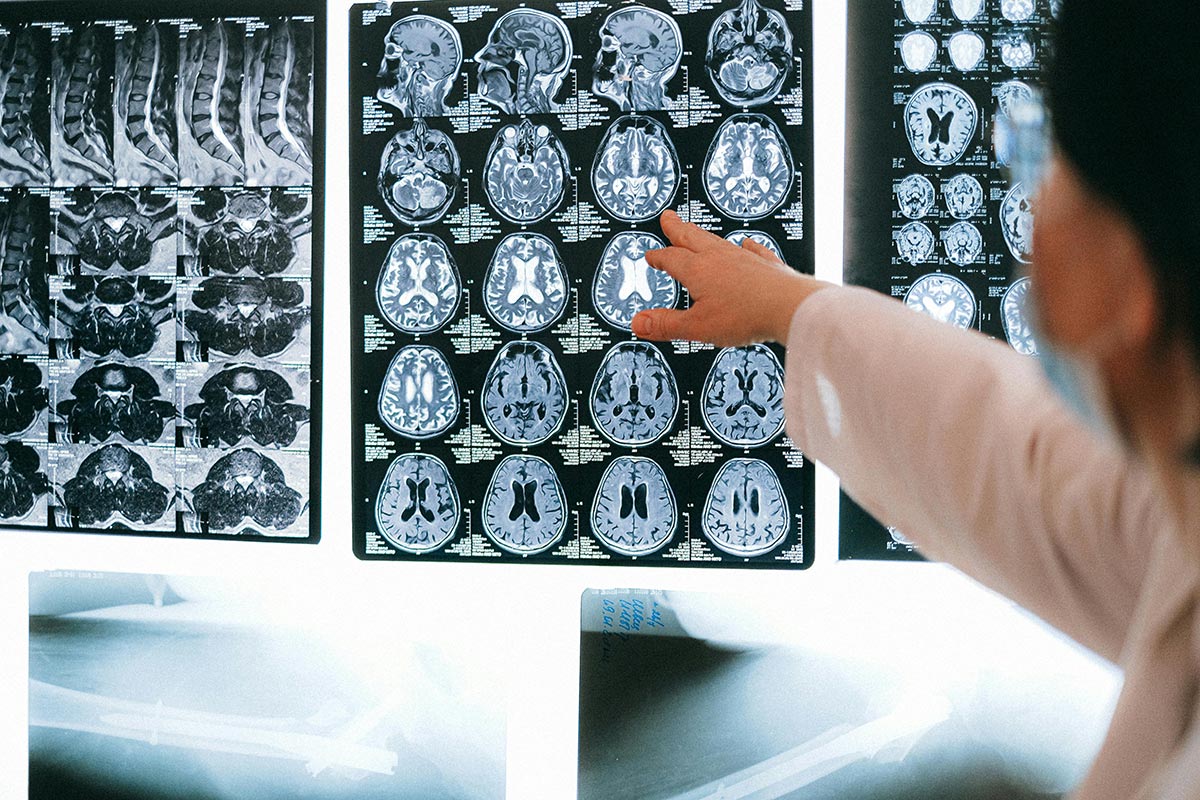
Understanding Social Anxiety and Substance Use
Understanding the connection between social anxiety and substance use is crucial for effective treatment. This section explores the impact of social anxiety on treatment and the prevalence of social anxiety in individuals with substance use disorders.
Impact of Social Anxiety on Treatment
Social anxiety can significantly affect the treatment process for individuals struggling with substance use. Those who experience social anxiety may have difficulties engaging in treatment programs, particularly those involving group therapy or social interactions. This apprehension can lead to avoidance of essential treatment opportunities, ultimately complicating their recovery journey. Research indicates that having an anxiety disorder increases the likelihood of developing a substance use disorder, worsening the recovery process from social anxiety itself [1].
| Treatment Type | Impact of Social Anxiety |
|---|---|
| Individual Therapy | May encourage participation; less social pressure. |
| Group Therapy | High level of anxiety may reduce attendance. |
| Family Therapy | Anxiety can hinder communication within the family. |
| Peer Support Programs | Social discomfort may deter participation. |
Prevalence of Social Anxiety in Substance Use
The prevalence of social anxiety among individuals with substance use disorders is a significant concern. Evidence shows that approximately one in every five U.S. adults experiences mental illness yearly, highlighting the pervasive nature of these issues. However, access to treatment remains inadequate, with only 43% of adults with mental illness receiving any mental health care, and a mere 11% of those with substance use disorders receiving treatment.
In a population of individuals with substance use disorders, the likelihood of co-occurring anxiety disorders, including social anxiety, is particularly high. This relationship complicates both the diagnosis and treatment of substance use issues. Understanding the prevalence of social anxiety is crucial for creating effective treatment strategies that address both anxiety and substance use.
For more information on the complexities of substance use treatment and individual considerations, refer to the role of rehabilitation services in substance use treatment and how to support a loved one in substance use recovery.
Challenges in Addressing Co-occurring Disorders
Addressing social anxiety in substance use treatment presents numerous challenges that can hinder effective recovery. Understanding the barriers to treatment access, the disparities between rural and urban areas, and how to leverage rural assets for support are essential for improving outcomes.
Barriers to Treatment Access
Individuals facing co-occurring disorders often encounter several barriers when seeking treatment. These barriers can include:
- Stigma: The stigma associated with both social anxiety and substance use can prevent individuals from seeking help due to fear of judgment.
- Cost: Financial constraints may make accessing treatment programs difficult for many.
- Lack of Awareness: Some individuals may not be aware of available treatment options or the necessity for integrated treatment for dual diagnoses.
- Transportation Issues: Access to facilities can be limited, especially for those living in remote areas.
A study from June 2014 highlighted these points, illustrating the multifaceted nature of barriers within both rural and urban settings [3].
Rural vs. Urban Treatment Disparities
There are notable differences in the availability of treatment facilities and services in rural areas compared to urban centers.
| Factor | Rural Areas | Urban Areas |
|---|---|---|
| Number of Facilities | Fewer available facilities | More numerous facilities |
| Inpatient/Residential Beds | Limited capacity | Greater capacity and variety |
| Accessibility to Services | Often long distances to travel | More accessible services |
Research indicates that rural areas frequently struggle with fewer facilities and inpatient beds dedicated to substance use treatment. This limitation can lead to longer wait times and decreased accessibility for those seeking help.
Leveraging Rural Assets for Treatment Support
Despite the challenges, leveraging existing rural assets can aid in addressing these barriers effectively. Some potential approaches include:
- Community-Based Programs: Utilizing local organizations to create awareness and offer support groups tailored to those with social anxiety and substance use issues.
- Telehealth Services: Expanding online therapy options can significantly improve access for individuals in remote areas.
- Partnerships with Local Resources: Collaborating with schools, churches, and community centers to facilitate support and information dissemination.
The document "Preventing Substance Misuse in Rural Settings" discusses rural-specific strategies that can help communities harness available resources and support systems.
By understanding and addressing these challenges, stakeholders can enhance treatment access for individuals dealing with co-occurring disorders, ultimately leading to improved recovery outcomes.
Comorbidity of Social Anxiety and Substance Use
Psychopathology in Socially Anxious Substance Abusers
Social anxiety disorder (SAD) often coexists with substance use disorders, creating a complex scenario for treatment. Individuals with comorbid conditions experience a range of psychological challenges that can complicate their recovery. Studies indicate that socially anxious substance abusers present higher levels of psychopathology than their non-socially anxious counterparts. They typically show increased symptoms of depression and generalized anxiety severity compared to others in treatment for substance use.
The prevalence of social anxiety among individuals in addiction treatment settings varies, but it is significant. Approximately 1 out of 3 individuals in intensive outpatient addiction treatment suffers from current social anxiety disorder, which is a slightly higher prevalence rate than seen in inpatient treatment settings. Additionally, the rates of comorbidity for social anxiety and substance abuse disorders range between 25% and 31% in both inpatient and outpatient programs.
| Study Findings | Rate (%) |
|---|---|
| Social Anxiety Disorder in Outpatient Treatment | ~33% |
| Comorbidity in Inpatient Treatment | 25-31% |
The barriers presented by social anxiety, such as reluctance to engage in therapy, can hinder recovery. Socially anxious individuals are reported to be 4-8 times more likely to feel that their shyness interferes with seeking help, participating in group therapy, or accessing peer support activities like Alcoholics Anonymous (AA) or Narcotics Anonymous (NA) [4].
Relationship Between Anxiety and Substance Use Disorders
The relationship between anxiety and substance use disorders is intricate. Individuals often turn to substances as a form of self-medication to alleviate the distress caused by anxiety symptoms. However, this can lead to a cycle of dependency and exacerbated anxiety, making addressing social anxiety in substance use treatment critical.
Socially anxious individuals may find substances provide temporary relief from their symptoms. Unfortunately, this use often leads to increased mental health issues, compounding the problems faced during treatment. Substance use may provide immediate comfort but disturbs the overall emotional balance, often resulting in more significant anxiety and depression in the long term.
For more on tackling the dual challenges of social anxiety and substance use, it is essential to integrate both therapeutic and support services to create a holistic approach to treatment. Strategies such as building healthy relationships in recovery and understanding the role of family in substance use treatment can be beneficial. Consider exploring the role of rehabilitation services in substance use treatment and the importance of family education in addiction recovery for additional insights.
Treatment Approaches for Dual Diagnosis
Addressing co-occurring social anxiety and substance use disorders requires effective treatment strategies. This section explores integrated therapeutic interventions and the efficacy of Cognitive Behavioral Therapy (CBT).
Integrated Therapeutic Interventions
Integrated therapeutic interventions focus on treating both social anxiety and substance use disorders simultaneously. This approach is essential given the significant relationship between the two conditions. Individuals suffering from social anxiety are more likely to develop substance use issues, as the anxiety may lead to substance use as a coping mechanism. Therefore, treating these disorders in parallel is critical for positive treatment outcomes.
Expert opinion suggests a necessary shift towards integrated treatments that address both disorders together; however, more research is needed to validate the efficacy of these interventions [5].
| Intervention Type | Description |
|---|---|
| Therapy Sessions | Combined therapy focused on both social anxiety and substance use. |
| Psychoeducation | Informing clients about the relationship between anxiety and substance use. |
| Skills Training | Teaching coping mechanisms and skills to manage anxiety symptoms without resorting to substances. |
Cognitive Behavioral Therapy (CBT) Efficacy
Cognitive Behavioral Therapy (CBT) has garnered attention as one of the most effective treatment approaches for individuals dealing with both anxiety and substance use disorders. CBT works by identifying and modifying irrational thoughts, managing negative moods, and preventing relapses.
Studies indicate that CBT is not only well-accepted by clients but also demonstrates efficacy across a range of substances, including alcohol, cannabis, and cocaine.
| Substance | CBT Efficacy |
|---|---|
| Alcohol | High |
| Cannabis | Moderate |
| Amphetamines | High |
| Cocaine | High |
| Heroin | Moderate |
Utilizing CBT in the treatment plan for individuals with both social anxiety and substance use disorders provides a framework for specialized treatment paths. Empirical evidence supports its effectiveness, making it an essential component of comprehensive dual diagnosis treatment. Addressing social anxiety in substance use treatment can facilitate recovery and improve overall outcomes.
For additional support strategies, explore other aspects of treatment like the role of peer support in substance use treatment or the impact of substance use on families.
Overcoming Comorbid Conditions
Addressing co-occurring disorders, such as social anxiety and substance use disorders, presents unique challenges. Developing strategies for minimizing medication use is important, along with recognizing the prevalence of anxiety disorders among those undergoing substance use treatment.
Medication Use Minimization Strategies
Minimizing medication usage in treating comorbid conditions is vital for promoting long-term recovery. Effective strategies often involve utilizing psychosocial interventions rather than relying solely on pharmacotherapy. This approach can reduce potential dependency on medications, which can be particularly problematic for individuals with a history of substance use.
Social workers play a crucial role in the treatment of substance abuse and mental disorders. Their involvement spans various aspects of care, including residential settings, patient discharge planning, and case management for clients dealing with comorbidities [7]. By leveraging social support networks and community resources, treatment providers can focus on non-medical interventions and enhance the overall effectiveness of treatment.
| Strategy | Description |
|---|---|
| Psychosocial Interventions | Utilizing counseling and support groups instead of medication. |
| Cognitive Behavioral Therapy (CBT) | Implementing evidence-based techniques to change negative thinking patterns associated with anxiety and substance use [6]. |
| Family Involvement | Engaging family members in treatment, emphasizing their role in the recovery process and minimizing the need for medication. |
Prevalence of Anxiety Disorders in Substance Use Treatment
The co-occurrence of social anxiety disorders and substance use disorders is significant, affecting a large number of individuals seeking treatment. Approximately 15 million people in America experience social anxiety disorder. The typical onset age is around 13 years old, and 36 percent of those individuals may endure symptoms for ten years or longer before receiving assistance.
These statistics highlight the critical need for effective therapies that address both conditions simultaneously. Expert opinion currently suggests a necessity for more studies to validate integrated treatments targeting both social anxiety and substance use disorders in tandem.
By understanding the prevalence and developing targeted approaches, treatment providers can significantly enhance recovery outcomes for individuals facing the dual challenges of social anxiety and substance use.
Enhancing Treatment Outcomes
Co-occurring Disorders Impact on Treatment
Addressing social anxiety in substance use treatment presents unique challenges. Co-occurring disorders can significantly impact the efficacy of treatment approaches, making any recovery journey more complex. Individuals facing both social anxiety disorder (SAD) and substance use disorder may experience heightened symptoms that complicate their treatment process. For instance, studies indicate that medications like paroxetine (Paxil) and sertraline (Zoloft) have been evaluated for treating both conditions, showing some effectiveness in reducing SAD, but they do not necessarily address alcohol use concurrently [5].
Co-occurring conditions may produce overlapping symptoms, such as increased anxiety or avoidance behaviors, potentially exacerbating substance use problems and increasing the chance of relapse. Understanding such complexities helps treatment providers tailor interventions to better serve individuals facing these dual challenges.
| Co-occurring Disorders | Impact on Treatment |
|---|---|
| Social Anxiety Disorder & Alcohol Use Disorder | Increased symptom severity, complicates treatment effectiveness |
| Social Anxiety Disorder & Drug Use Disorder | Heightened anxiety and avoidance, may hinder participation in treatment |
| Anxiety Disorders & Substance Use Disorders | Require integrated treatment approaches for better outcomes |
Role of Psychotherapies in Substance Abuse Recovery
Psychotherapies play a crucial role in the recovery from both substance use disorders and anxiety disorders. Cognitive-behavioral therapy (CBT) is recognized as one of the most effective approaches for treating individuals with dual diagnoses. CBT is accepted well by clients and demonstrates empirical support for a variety of substances, including alcohol, cannabis, and heroin [6].
CBT aids patients in identifying and modifying irrational beliefs, managing negative moods, and employing relapse prevention strategies. This structured approach empowers individuals to develop coping strategies, which are essential in dealing with the triggers of both anxiety and substance use.
In addition to CBT, other therapies, such as Brief Opportunistic Interventions, have shown effectiveness in addressing alcohol-related problems. These brief interventions—lasting between 5 to 30 minutes—can help patients understand the risks associated with their substance use and motivate them to make positive changes [6].
Incorporating a robust therapeutic framework that addresses specific needs will ultimately lead to better long-term outcomes for individuals coping with both social anxiety and substance dependence. For more insights, explore the various methods within the role of rehabilitation services in substance use treatment, and learn about support systems available in recovery.
.svg)





